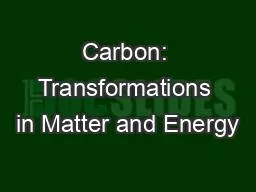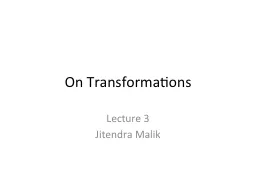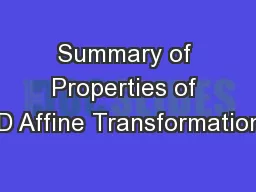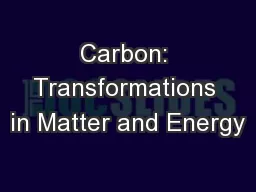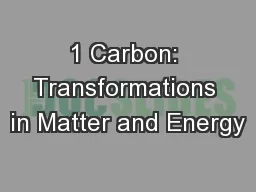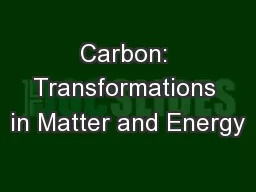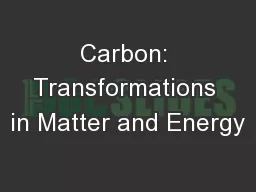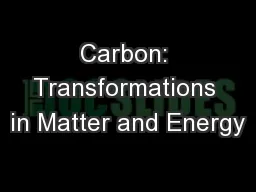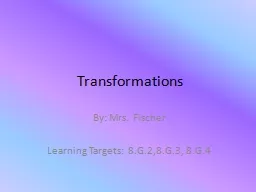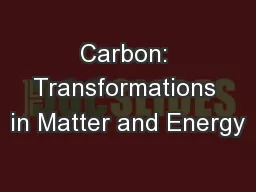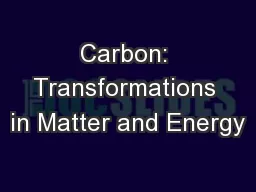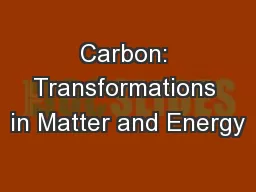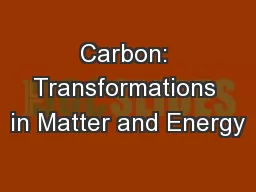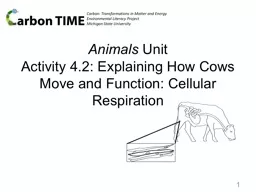PPT-Carbon: Transformations in Matter and Energy
Author : dayspiracy | Published Date : 2020-11-06
Environmental Literacy Project Michigan State University Animals Unit Activity 51 Tracing the Processes of Cows Growing Digestion and Biosynthesis 1 Unit Map You
Presentation Embed Code
Download Presentation
Download Presentation The PPT/PDF document "Carbon: Transformations in Matter and En..." is the property of its rightful owner. Permission is granted to download and print the materials on this website for personal, non-commercial use only, and to display it on your personal computer provided you do not modify the materials and that you retain all copyright notices contained in the materials. By downloading content from our website, you accept the terms of this agreement.
Carbon: Transformations in Matter and Energy: Transcript
Download Rules Of Document
"Carbon: Transformations in Matter and Energy"The content belongs to its owner. You may download and print it for personal use, without modification, and keep all copyright notices. By downloading, you agree to these terms.
Related Documents

